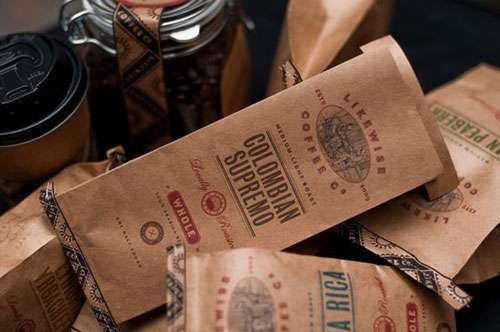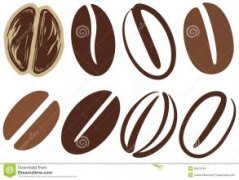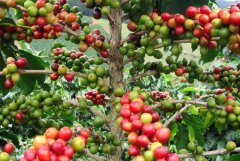The treatment of raw coffee beans basic knowledge of coffee
After the coffee fruit is picked, the coffee bean must be stripped out of the coffee fruit as soon as possible. There are generally the following ways to deal with it:
Water washing, that is, the coffee fruit is immediately picked when it turns red, the hard peel is removed by machine, the sticky berries are exposed, and then thrown into the pool to ferment. In about a day or two, the bacteria will eat most of the pulp attached to the seeds. The whole fermentation process needs to be monitored by the old master, if it goes too far, it will destroy the quality of coffee beans. After the berries are removed by fermentation, rinse the residual pulp attached to the seeds with clean water.
Then there is the drying process, it is best to lay the ground for sun drying, the flavor is better, but if it rains, it can also be dried by machine, and the temperature should be controlled well. Dry and then polish.
Generally speaking, washed beans are bluish green, beautiful, and have a clear and bright sour taste. Guatemala, Colombia, Blue Mountains, Cana, Kenya, Java and Panama coffee beans are all washed beans. Washing is used in Latin America with the exception of Brazil.
This kind of treatment process requires more capital and energy investment, and the cost is higher, but it helps to ensure the quality of coffee beans and reduce the loss.
There is also a semi-washing method. The first step is the same as washing. The fruit is picked when it turns red, but it is not thrown into the fermentation pool. Instead, the pericarp is removed by a machine, the berries are spread on the ground, dried and then moistened, and the dried flesh is ground with a special machine to remove the seeds. Mantenin in Indonesia is mostly semi-washed. Brazil has also used semi-washing in recent years, which is the only country in the world that has both sun, water and semi-washing treatments.
The rule of the sun is to take the red fruit to dry directly and then force peeling and shelling. In this way, beans often have defects and are not beautiful. Beans dried in the sun are often made of foreign bodies or stones. The flavor of the beans treated by this method is complex, with the taste of the sun, the fruit flavor is very strong, and the consistency is better than that of washing, but the appearance of beans is not good. General Brazilian beans as well as Manning and mocha are typical sun-treated beans.

Important Notice :
前街咖啡 FrontStreet Coffee has moved to new addredd:
FrontStreet Coffee Address: 315,Donghua East Road,GuangZhou
Tel:020 38364473
- Prev

Reference index of coffee bean grading
(1) the size of coffee beans it is said that the size of beans does not affect the flavor of coffee, such as Mattari in Yemen. Although the particles of beans are large and small, they are still the top grade of coffee. However, in many producing areas, the size of coffee beans is indeed a valuable indicator. The regions where this classification method is generally used are Kenya, New Guinea and Poland.
- Next

Classification of Coffee by Taste Taste Classification of Coffee in High-quality Coffee producing areas
Boutique coffee beans must be excellent varieties, such as the original bourbon species, mocha species and Tippica species. The coffee beans produced by these trees have unique aroma and flavor, which is far from that of other tree species, but the relative yield is low. in recent years, in order to pursue the ability of disease and insect resistance and increase the yield, there have been many improved tree species, such as the massive promotion of high-yield rurial11 species in Kenya.
Related
- Beginners will see the "Coffee pull flower" guide!
- What is the difference between ice blog purified milk and ordinary milk coffee?
- Why is the Philippines the largest producer of crops in Liberia?
- For coffee extraction, should the fine powder be retained?
- How does extracted espresso fill pressed powder? How much strength does it take to press the powder?
- How to make jasmine cold extract coffee? Is the jasmine + latte good?
- Will this little toy really make the coffee taste better? How does Lily Drip affect coffee extraction?
- Will the action of slapping the filter cup also affect coffee extraction?
- What's the difference between powder-to-water ratio and powder-to-liquid ratio?
- What is the Ethiopian local species? What does it have to do with Heirloom native species?

